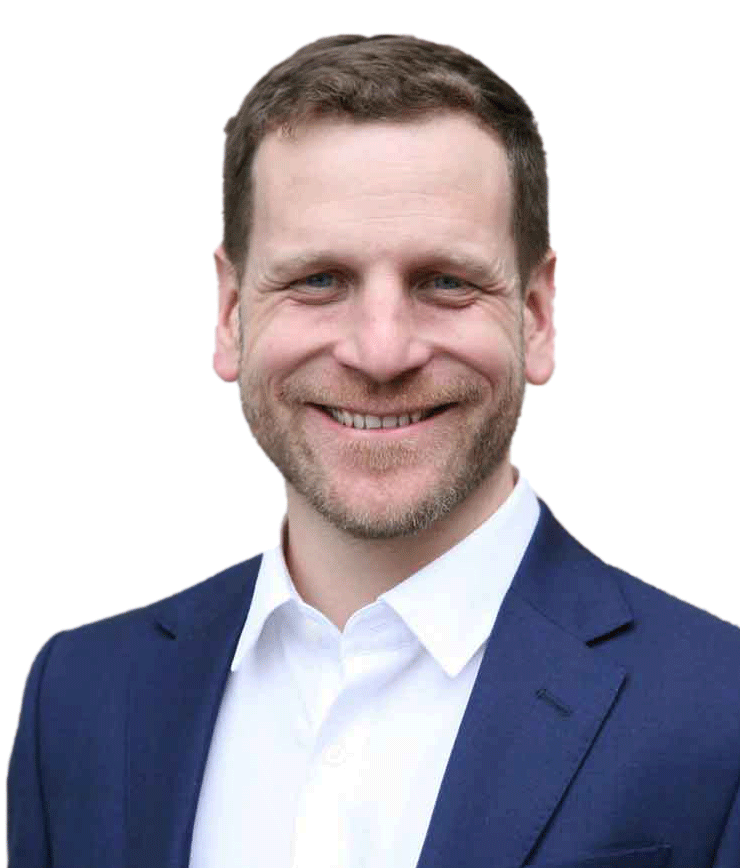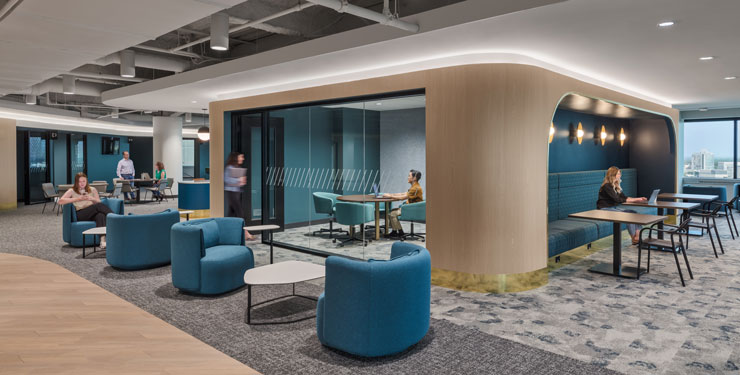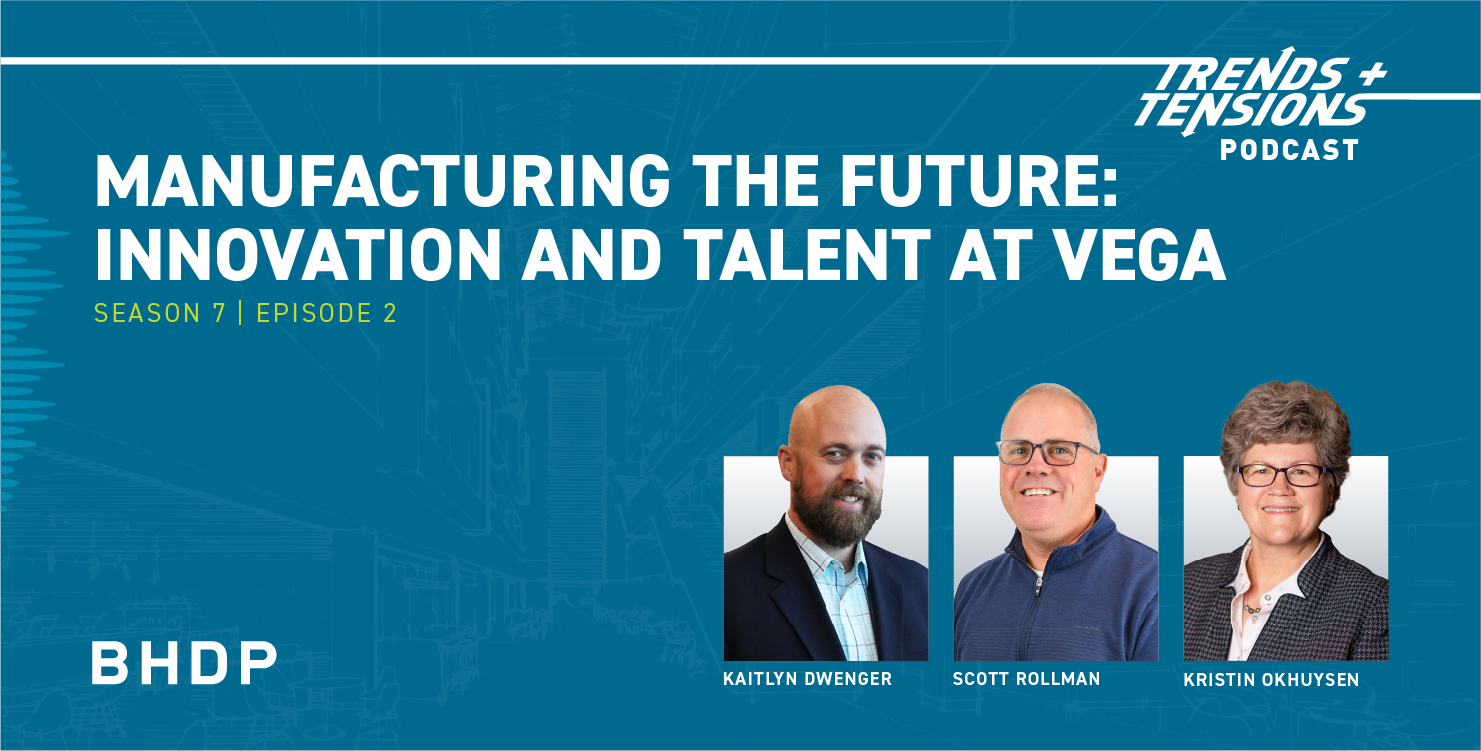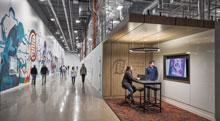
Behavior by Design: Market Forces Demand New Workplace Behaviors
Installment 3 of 6: This is the third in a bimonthly series of six articles on the growth, value, and future of Design for People. The intent is to explore and discover the impact of behaviors, habits, and patterns of people in the design of environments.
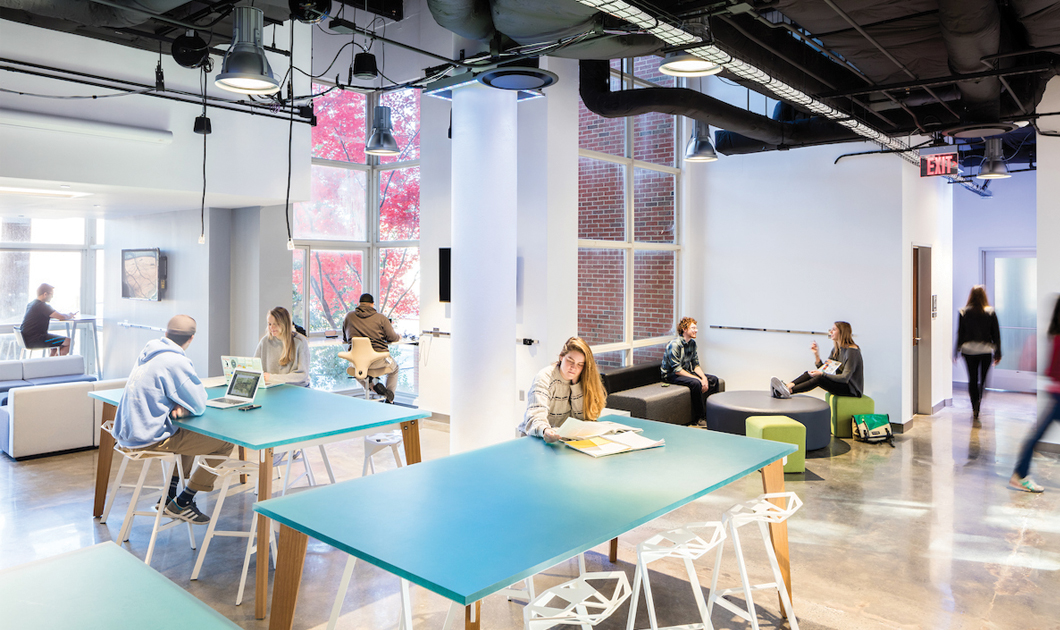
The University of North Carolina at Chapel Hill’s Carmichael Makerspace illustrates how workplace behaviors are being driven by larger market forces as students are collaborating and working together organically outside of the classroom.
Businesses are designed to create and capture value. High-value businesses identify distinct market positions, develop sustainable strategies, maximize the productivity of their assets, marshal their resources (including their people), minimize their expenditures, and generate returns that can either be distributed or reinvested. To accomplish these goals, businesses need to optimize and monetize the productive potential of people. While simple in concept, designing for people is never so straightforward.
As the market continues to shift from concrete, discrete, and predictable modes of business management to emerging ones that embrace complexity and disruption, the demand for different breeds of workers and new modes of management is on the rise. The generation of future business value is dependent on the development of an entirely new set of organizational behaviors. Rather than designing businesses using outdated concepts, intelligent business leaders are constantly evolving the nature of their value streams and tweaking the organizational ecosystems that service their customers. As a result, the office is in a continual state of flux. In this context, it is important for CRE professionals to identify and deliver spaces that anticipate change and evolve to meet an entirely new set of behaviors.
This is the third in a continuing series of articles exploring the link between the built environment and the human behaviors that unfold therein. In the first, the case was made for looking beyond the form and function of the environment. Instead, it was posited that the attitudes and actions of the workforce, set within the context of the building, present a compelling source of design value to the designer and tenant alike.
The second article (April 2018) identified the shift away from individual cubicles towards agile, activity-based workplace environments. This shift was attributed to three factors: 1) the realization (via observation) and confirmation (via data) that the modern office is largely underutilized; 2) the rampant employee engagement epidemic; and 3) the evolution of work, itself—from highly specialized and independent to largely collective and collaborative. The case was made that tenants should acknowledge how the changes, from a dedicated, predictable workplace to one built in response to the factors outlined above, have elicited emotional responses from the people for whom the design was created. They are uncertain, skeptical, doubtful, and afraid. The focus then turned to managing how people experience change.
Before jumping to change management, though, it’s best to further understand exactly what is changing.
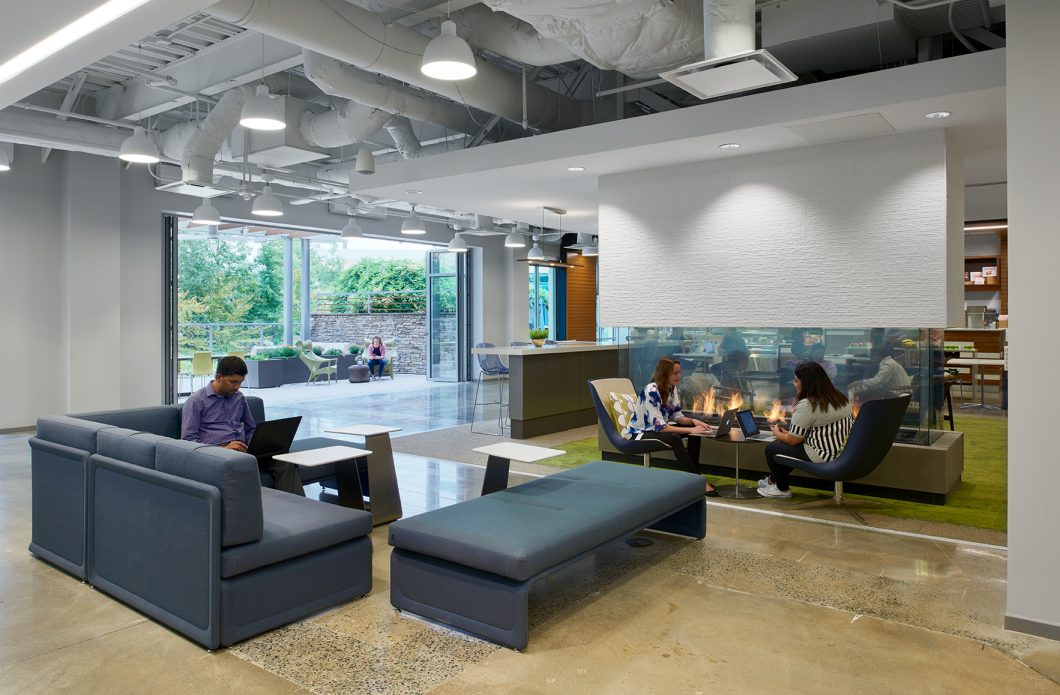
This corporate headquarters includes workspaces that are no longer easily identifiable as workspaces and now resemble a more residential feel.
The game has changed
The United States has a collective obsession with technology and innovation, one that borders on fetishism. People idolize the late Steve Jobs, Elon Musk, and others for their devil-may-care attitudes and their relentless commitment to progress. Many laugh along at the comedic absurdity of the TV show, Silicon Valley. There’s always great anticipation leading up to new product cycles, CES™, and the expiration of our current phone plans. Employees gaze longingly at the slides in the Google space, and snickering derisively—assert, “Not here!” The same people still secretly wonder, “What if?”
In businesses large and small, in markets consolidated and fragmented, in sectors new and old, the call of the day is “innovation!” The response is the same from financial services firms to oil and gas providers, “We’re a technology company now.” Although there is endless debate over the veracity of this claim, the truth is technology companies behave differently, and they have reset collective expectations for how to behave in the workplace. CRE professionals, irrespective of industry, must take note.
The old rules no longer apply
Creative destruction, innovation, disruption—whatever it’s called—new ventures come at the expense of old. What’s more, in a global, flat, and connected economy, no business is safe for long. Look no further than the shortening half-lives of the once static Fortune 500. Set against this turbulent market, all facets of the business are responsible for delivering value to the organization. In the CRE space, this demand is set against fundamental shifts within the big four factors of workplace strategy and design: people, place, process, and technology.
Fluid is the new flat
While conventional wisdom acknowledges the stability of organizational hierarchies is unsuited for the dynamism of the modern market, some companies are going one step further. When Netflix’s Company Culture presentation leaked in 2014, it set the HR industry ablaze. It’s worth a read, but the general gist is this: the internal job market should reflect the external one, and a company and its employees are best served when both acknowledge hard facts. Rather than fit people into fixed roles and ladders of progressive responsibility, leading organizations are embracing fluid management models that encourage talent to find its highest and best use. Many employees have bemoaned the existence of silos within their organizations. In a fluid model, people belong to projects, rather than departments, and boundaries are delineated based on need rather than dictated by accounting necessity. The implications for workplace planning on this fact alone are ripe.
Failure is the mother of invention
When the target is constantly moving, the best bet is to take as many shots as possible. While many organizations claim to have a culture that embraces failure, few truly do it well. There is a reason that startups are bred amongst friends in the early morning hours—the fall is shortest from the ground floor. The trust required to fail fearlessly is often very difficult to come by in large organizations, where long-term career considerations often trump short-term prototyping cycles. Open offices can compound the matter, as private failure can easily become public spectacle. Creating spaces where failure is not only tolerated but also encouraged is quickly becoming a critical component of workplace design. Alphabet, Inc.’s X serves as a dramatic example.
Communication is always on
As work continues to shift from tethered workstations and fixed office hours to connected anytime devices, communication patterns have evolved as well. In fact, increasingly, they mirror the interaction that takes place on personal devices. Where a 10:00 PM call from the boss might have once demanded a frenetic rush back to the office, a 10:00PM text today might be resolved in 140 characters, not including emojis. Even when individuals bemoan the loss of professional decorum, the fact is developments in the consumer space have forever changed the way communication occurs with one another. This dates from AOL Instant Messenger, up through Facebook™, Twitter™, Instagram™, and Snapchat™. And, the race is on to own digital workplace communication as well. Just ask Facebook™, Slack™, and Microsoft™. In a business environment where constant contact has supplanted weekly meetings, CRE professionals can create value by augmenting analog spaces with digital systems. Pulling the work out from personal drives and into the collective realm, as was done by Four Winds Interactive™ and others, promises to disrupt the way information is shared and the resulting behavior in the workplace—forever.
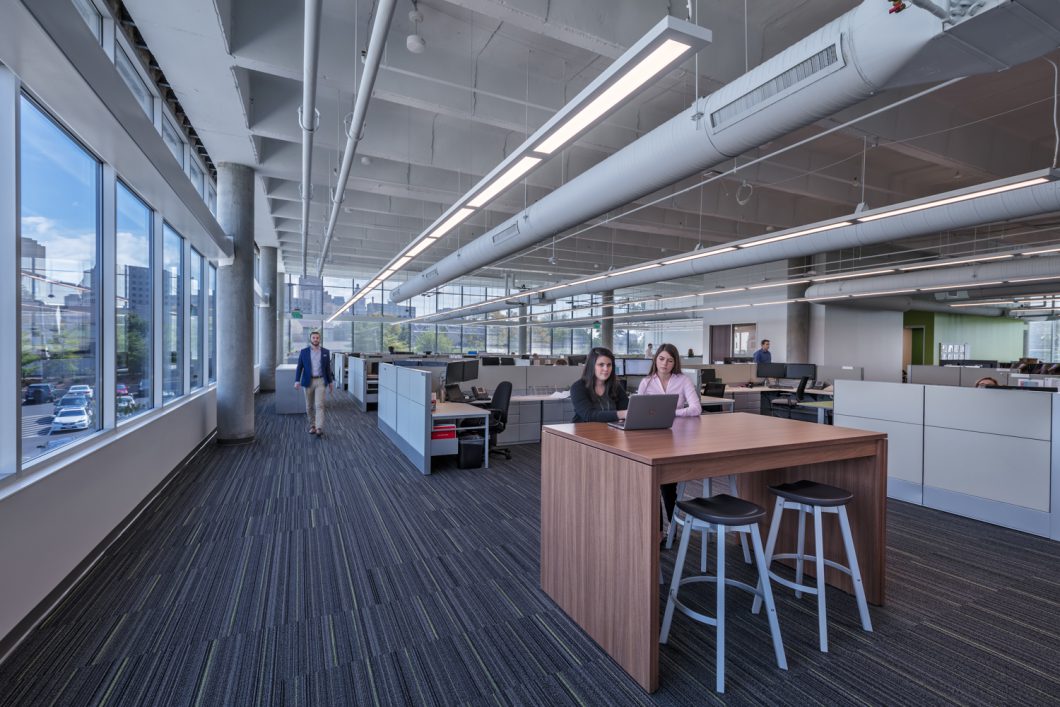
This newly designed office space encourages collaboration and include open spaces where failure is encouraged.
Talent is transient
Many blame millennial attention spans and perceived commitment issues for the ever-shortening tenures at organizations. While the theory that job-hopping is rampant has been largely debunked, some studies indicate the other side of the equation—labor demand—is becoming increasingly hesitant. Employers are warming to the idea of non-payroll personnel. Regardless of the nature of the trend, the truth remains that turnover within the workforce generates pressure on the CRE function. The rise of the so-called contingent workforce has enormous implications on organizational culture and the design of space. In a dedicated desking model, turnover meant work orders and service requests. A desk is easily understood, and new employees were typically supported with extensive on-boarding programs. In an agile office environment staffed with employees and contractors alike, the challenge is to design intelligible space that communicates design intent without being overly explicit.
New business behaviors will determine who wins
Current and future trends from the technology sector have and will dramatically alter the business landscape, even in industries that might have once been isolated. In response, savvy organizations should selectively adopt new behaviors that will allow them to deliver additional value to their customers and employees alike. The new reality is behaviors unfold within the context of established environments and attitudes. What hasn’t changed is most people are very skeptical of change. The next article in this series will explore the implications of behavioral change for organizations and individuals alike—identifying emerging workplace models that align the design of space to new workplace behaviors.
Originally published in Work Design Magazine.
Author
Content Type
Published Articles
Date
June 18, 2018
Market
Practice
Topic
Workplace Strategy

